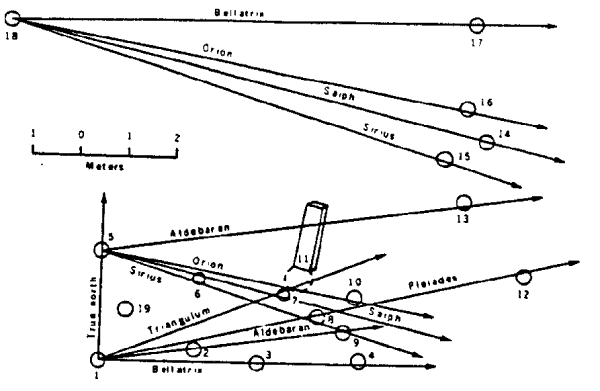Stone Alignments In Subsaharan Africa
Megalithic sites are found everywhere; many were apparently used for calendar reckoning. Although numerous megalithic circles and other arrangements are known in Africa, particularly Ethiopia, astronomy does not seem to have been a primary objective of African sites. Now, however, a stone alignment in northwestern Kenya called Namoratunga has been found with unmistakable astronomical overtones. At Namoratunga, 19 large basalt pillars are arranged in rows forming a suggestive pattern. Since the site is dated at approximately 300 B.C., archeologists have taken sightings on seven prominent stars as they would have appeared during this period. (The azimuths of some of these stars had changed by as much as 12� in 2,200 years.) The stars chosen are those employed by Eastern Cushites, the present inhabitants of the region, in calculating their rather sophisticated calendar. Pairs and frequently triads of these pillars line up very accurately (to less than 1�) with the seven key stars. The people occupying this part of Kenya about 300 B.C., therefore, probably possessed detailed astronomical information.
(Lynch, B.M., and Robbins, L.H.; "Namoratunga: The First Archaeoastronomical Evidence in Sub-Saharan Africa," Science, 200:766, 1978.)
Comment. This astronomical sophistication is consistent with the celestial knowledge of the Dogon tribe mentioned in the controversial book: The Sirius Mystery. For more on African megalithic sites, see our Handbook: Ancient Man. Description here.

Basalt pillar alignment at Namoratunga II
